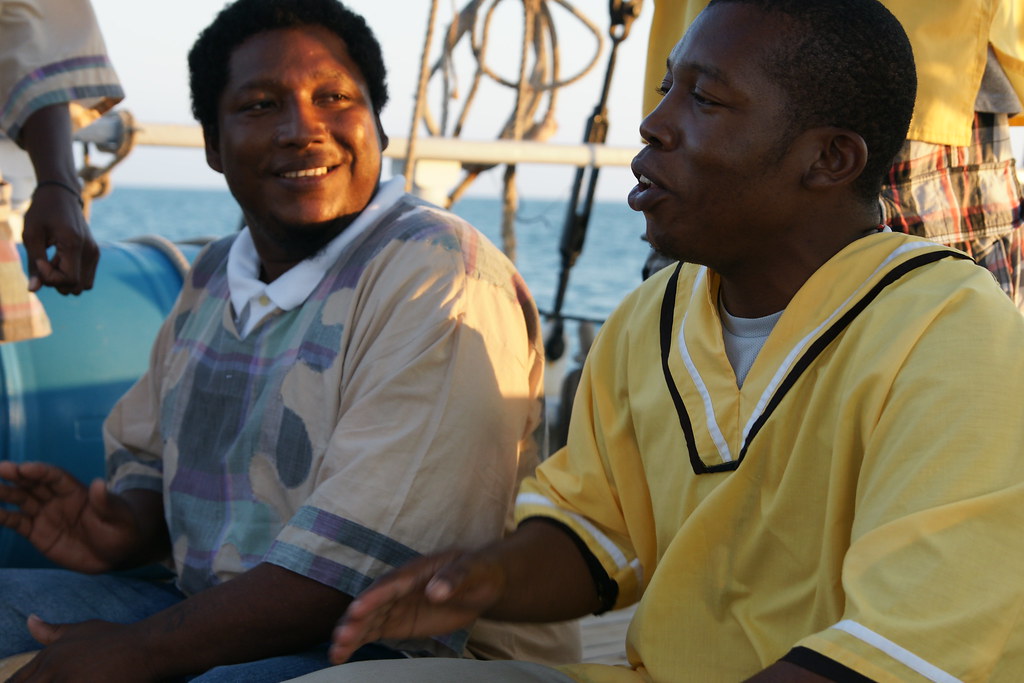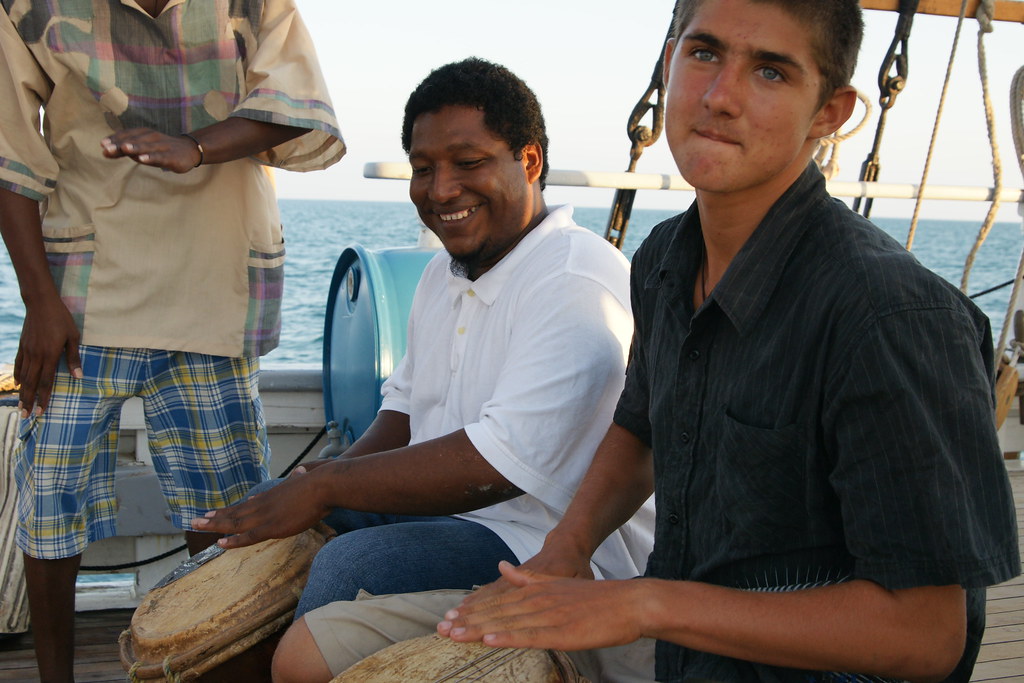Placencia, Belize
>> Tuesday, April 13, 2010
Our short passage from Guanaja was important step in our students' roles aboard the ship and as a crew; it was their first passage standing as Junior Watch Officers (JWOs), running the watch by themselves under the vigilant, but mostly silent, care of the professional crew. This means our students were navigating, leading the watch, shipboard daily routine, and sail evolutions by themselves... no small feat. This is an enormous undertaking, as the weight of responsibility and stress can seem daunting.
The highlight came in the early hours last Friday morning, just after rounding the reef 30nm from Placencia, a port none of our professional crew have sailed into before. Chris was JWO, and Trey below navigating. Together they led all hands in bringing the ship into port, navigating the shallows and reefs, striking sails, and setting the anchor. Captain Flansburg was elated at their performance and that of the entire student crew.
Once snug, and after playing the customs and immigration game with local officials, we were able to go ashore to explore. Our first day in Belize was spent biking the Placencia Peninsula, which is becoming a popular spot with tourists, ex-patriots, and real estate agents. But it is also the home of Seine Bight, a Garinagu Village a few miles to the north. The Garinagu (also often called Garifuna, the name of their language, or Black Caribs, an antiquated term from the Colonial era) are a people whose history has traversed the Caribbean from east to west, much like our own voyage. Their descendants read like the syllabus to a class in Caribbean history--West African, Carib, Arawak. A mixture of shipwrecked African slaves and Carib Amerindians on the island of St. Vincent in the Eastern Caribbean, then known as the Black Caribs, were fierce adversaries to the French and English trying to colonize the island for sugar production. They were also a dangerous symbol of resistance to enslaved Africans, many of which ran away from their colonial masters to live with the Caribs. Eventually, the English forcibly migrated nearly the entire population to the Western Caribbean island of Roatan. From there the Garinagu spread throughout the region.
We've also visited the Cockscomb Jaguar Preserve, where we hiked a trail into one of the largest rainforest preserves in Central America and the first jaguar preserve in the world. While we didn't see any jaguars (they usually hunt at night) we did see an array of wildlife and plants, and swam in yet another idyllic waterfall and swimming hole. We also got to stop in Maya Center, the village where those Mayan families displaced by the reserve sell crafts and offer guide services to tourists.
The Mayan ruins were a highlight of the trip, as well, and offered a glimpse into a culture so different, and mysterious, than we have seen so far. The Maya of the Classic period had mastered astronomy, developed agriculture, and organized an intricate government. But around 900 a.d. that highly developed culture mysteriously disappeared, and their temples abandoned. Their Mayan descendants still live in the area today, but completely disparate from that past.
All hands are well and aboard doing ship's work today, with the plan to get underway tomorrow morning for our longest passage of the trip, bound for the US.
JP








0 comments:
Post a Comment